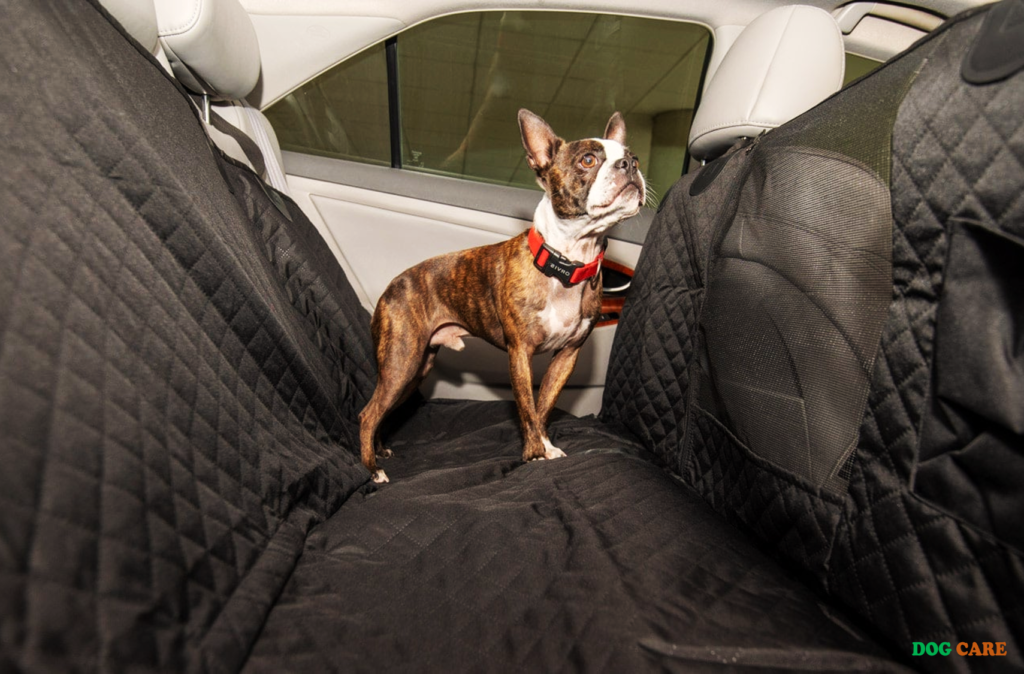Nasodigital Hyperkeratosis Dog Paw: Nasodigital hyperkeratosis is a condition affecting a dog’s paw characterized by the overgrowth of hard, dry, and crusty skin on the nose and digital pads. This condition can cause discomfort and difficulty for dogs, but there are effective treatments available to manage and reduce the symptoms.
Managing Nasodigital hyperkeratosis in dogs involves regular moisturization, trimming, and proper hygiene practices to keep the affected areas clean and healthy. Seeking veterinary guidance is important to determine the underlying cause and receive appropriate treatment for this condition. Prompt diagnosis and a comprehensive treatment plan can help alleviate the discomfort and improve the quality of life for dogs with Nasodigital hyperkeratosis.

Understanding Nasodigital Hyperkeratosis
Nasodigital Hyperkeratosis, also known as hyperkeratosis of the nose or nasal planum, is a common condition that affects dogs. It involves the excessive growth and hardening of the skin on their paws, especially the nose. This condition may cause discomfort and even pain for our four-legged friends. To provide the best care for our furry companions, it is crucial to have a clear understanding of what Nasodigital Hyperkeratosis is, its causes, and available treatment options.
What Is Nasodigital Hyperkeratosis?
Nasodigital Hyperkeratosis is a condition characterized by thickening and hardening of the skin on a dog’s nose and paw pads. It appears as crusty, dry, and rough skin, which can be unsightly and uncomfortable for the dog. This condition can affect any dog breed, but some breeds, such as Labradors, Boxers, and Bulldogs, are more predisposed to developing Nasodigital Hyperkeratosis.
The excessive keratinization of the skin causes the buildup of keratin, a tough protein that normally protects and strengthens the skin. However, in the case of Nasodigital Hyperkeratosis, this overproduction of keratin leads to an abnormal thickening of the skin, resulting in the characteristic symptoms.
Causes Of Nasodigital Hyperkeratosis
The exact cause of Nasodigital Hyperkeratosis in dogs is still unclear. However, certain factors and conditions are believed to contribute to its development:
- Genetics: Some breeds are genetically predisposed to Nasodigital Hyperkeratosis. The genes responsible for hyperkeratosis can be passed down from one generation to another.
- Dry or harsh environmental conditions: Exposure to dry and harsh environments can cause the dog’s skin to become dry, leading to the overproduction of keratin.
- Disease or infection: Underlying health issues or infections, such as parasites or autoimmune diseases, can trigger the development of Nasodigital Hyperkeratosis.
- Poor nutrition: A lack of essential nutrients, such as omega-3 fatty acids, in a dog’s diet can negatively affect their skin and contribute to the development of this condition.
It’s important to note that while certain breeds may be more prone to Nasodigital Hyperkeratosis, any dog can develop this condition. Understanding the causes can help us take proactive steps to prevent and manage it effectively.
Symptoms And Diagnosis
Treating Nasodigital Hyperkeratosis
When it comes to treating nasodigital hyperkeratosis in dogs, there are multiple options available. The key is to start with prevention and early intervention, followed by medical treatment options, and finally, home remedies and care. By addressing this condition promptly and effectively, you can ensure your furry friend’s paw health is maintained.
Prevention And Early Intervention
Prevention is always better than cure. To prevent or manage nasodigital hyperkeratosis, consider the following:
- Trimming the hair around the affected area regularly to avoid the buildup of excess keratin.
- Applying paw balms or specific moisturizers to keep the paw pads hydrated.
- Using booties or protective paw coverings during walks in extreme weather conditions.
- Regularly cleaning your dog’s paw pads to remove any dirt or debris that could contribute to the development of this condition.
Medical Treatment Options
If prevention measures aren’t enough or the condition has already developed, there are medical treatment options available:
- Veterinary Intervention: Seeking professional help from a veterinarian is crucial to assess the severity of the condition and determine the appropriate treatment plan.
- Topical Treatments: Your vet may recommend specific creams or ointments on the affected paws. These topical treatments can help soften the keratin and reduce discomfort.
- Oral Medications: In more severe cases, oral medication may be prescribed to manage the condition. These medications typically work by reducing the production of excess keratin.
Home Remedies And Care
In addition to medical treatment, you can also undertake home remedies and care to support your dog’s recovery:
- Regular Foot Soaking: Soaking the paw pads in warm water with a gentle soap can help soften the keratin and make it easier to remove.
- Gentle Exfoliation: Once the paw pads are soaked, use a soft brush or cloth to gently exfoliate the keratin. Be careful not to apply excessive pressure, as it may cause discomfort or injury.
- Moisturize: After exfoliating, apply a moisturizer specifically formulated for dogs’ paw pads to keep them hydrated and prevent further keratin buildup.
- Maintain Good Hygiene: Regularly clean your dog’s paws to minimize the risk of infection and remove any dirt or debris that may contribute to the condition.
Remember, always consult with a veterinarian before trying any home remedies or treatments on your own, as they can provide expert advice tailored to your dog’s unique situation.
Maintaining Paw Health
Nasodigital Hyperkeratosis is a condition that affects a dog’s paw causing excessive dryness and thickening of the skin. Maintaining paw health is crucial for preventing discomfort and infection in dogs with this condition. Regular paw care, including moisturizing and trimming excess skin, can help alleviate symptoms and promote overall paw health.
Maintaining Paw Health One of the most important aspects of caring for your dog is ensuring their paw health. Just like humans, dogs rely on their paws for mobility and daily activities. When it comes to nasodigital hyperkeratosis, a condition that causes thickened and hardened paw pads, proper paw care becomes even more crucial. In this section, we will explore the importance of maintaining paw health and provide you with some valuable tips for paw care and maintenance.
Nasodigital Hyperkeratosis Dog Paw
Importance Of Paw Health
Ensuring your dog’s paw health is essential for their overall well-being and quality of life.
1. Preventative Care: By maintaining paw health, you can proactively prevent various issues such as infections, cracks, and ulcers. Regular paw care can help you identify any abnormalities early on, allowing for prompt treatment.
2. Mobility and Comfort: Healthy paws are crucial for your dog’s mobility and comfort. Keeping their paw pads clean, moisturized, and free from excessive thickening not only helps them walk, run, and play with ease but also prevents discomfort or pain.
3. Stability and Balance: Paw health is directly linked to your dog’s stability and balance. Well-maintained paws provide better traction and grip, reducing the risk of slips, falls, and injuries.
Tips For Paw Care And Maintenance
Follow these simple yet effective tips to maintain your dog’s paw health:
1. Regular Inspections: Take a few moments each day to inspect your dog’s paws. Look out for signs of redness, swelling, cracks, or any unusual growths. Early detection can prevent the progression of any potential problems.
2. Gentle Cleaning: Regularly clean your dog’s paws, especially after walks or outdoor activities. A simple wipe with a clean, damp towel is usually sufficient. Be sure to pay attention to the spaces between their toes and remove any debris or dirt.
3. Moisturization: Apply a dog-friendly moisturizer or paw balm to keep the paw pads hydrated and prevent excessive dryness or cracking. Look for products that contain natural ingredients like coconut oil or shea butter.
4. Nail Care: Keep your dog’s nails trimmed to an appropriate length. Overgrown nails can affect their gait and lead to paw pad injuries. Consult a professional groomer or veterinarian for guidance on nail-trimming techniques.
5. Protect from Extreme Weather: Hot pavement or cold, icy surfaces can be harsh on your dog’s paws. Consider using dog boots or paw wax to provide an extra layer of protection during extreme weather conditions.
6. Regular Exercise: Engage your dog in regular exercise to promote healthy circulation and maintain strong paw muscles. Activities like walking, running, and playing fetch help keep the paws in good shape.
Remember, each dog is unique, and their paw care needs may vary. If you notice any persistent issues or if your dog’s paw health seems to be deteriorating, consult with your veterinarian for appropriate guidance and treatment options. By prioritizing your dog’s paw health and following these simple tips, you can ensure that their paws remain healthy, comfortable, and ready for all their adventures ahead.
Related Conditions
Nasodigital hyperkeratosis in dogs is often accompanied by related conditions affecting the paw, such as cracked pads or fungal infections. Proper care and regular maintenance can help manage these conditions and keep your dog’s paws healthy.
While nasodigital hyperkeratosis in dog paws is a unique condition, it shares some similarities with other paw disorders. Understanding these related conditions and distinguishing them from nasodigital hyperkeratosis is crucial in providing proper care and treatment for our beloved furry friends.
Similar Paw Disorders
Several paw disorders may confuse due to their similar symptoms. This table highlights the similarities and differences between nasodigital hyperkeratosis and these related conditions:
| Condition | Similar Symptoms | Distinguishing Features |
|---|---|---|
| Nasal Hyperkeratosis | Excess keratin buildup | Nasal crusts, not present on paws |
| Paw Pad Hyperkeratosis | Excess keratin buildup | Localized on paw pads, not on the nose |
| Symmetrical Lupoid Onychodystrophy | Brittle nails, inflammation | No excessive keratin on the nose or paws |
| Hyperadrenocorticism | Excess keratin, thinning of the skin | No excessive keratin on the nose or paws, other systemic symptoms present |
Distinguishing Nasodigital Hyperkeratosis From Other Conditions
When it comes to differentiating nasodigital hyperkeratosis from other conditions, there are several key factors to consider:
- Nasodigital hyperkeratosis specifically affects the areas around the nose and paw pads, while other conditions may have different affected areas.
- The characteristic ‘nose pad’ appearance is unique to nasodigital hyperkeratosis and not present in other conditions.
- Unlike certain conditions like symmetrical lupoid onychodystrophy, nasodigital hyperkeratosis does not present with brittle nails.
- While nasodigital hyperkeratosis can be a primary disorder, other conditions may be secondary to underlying causes such as allergies or hormonal imbalances.
By considering these distinguishing features, veterinarians can accurately diagnose and treat nasodigital hyperkeratosis, ensuring the best possible outcome for our four-legged companions.
Conclusion And Future Research
In conclusion, Nasodigital Hyperkeratosis (NDH) is a common condition in dogs that affects the paws. It is characterized by the excessive growth of keratin in the nose and foot pads, resulting in dry, cracked, and thickened skin. While various treatments are available, such as topical creams and moisturizers, it is crucial to understand the underlying causes and explore new avenues for potential treatment and prevention.
Summary Of Nasodigital Hyperkeratosis
Nasodigital Hyperkeratosis is a condition that primarily affects the nose and paw pads of dogs. It leads to the accumulation of excess keratin, causing the skin to become dry, cracked, and thickened. Although this condition is generally non-life-threatening, it can be uncomfortable for dogs and may impede their mobility. Common breeds affected by NDH include Labrador Retrievers, Boxers, and Bulldogs.
Areas For Further Study
Further research is necessary to gain a deeper understanding of Nasodigital Hyperkeratosis and to identify potential advancements in treatment options. Here are some areas that warrant future investigation:
- Understanding the underlying causes: Investigate the genetic, environmental, and nutritional factors that contribute to the development of NDH. This could help identify preventive measures and uncover possible links to other medical conditions.
- Exploring novel treatment methods: Research new therapies and interventions, such as targeted medications or innovative surgical techniques, to address the symptoms and provide long-term relief for dogs affected by NDH.
- Comparative studies: Conduct comparative studies between different breeds to determine if certain genetic variations make specific dogs more susceptible to Nasodigital Hyperkeratosis, enabling early screening and intervention.
- Long-term management strategies: Develop comprehensive management plans that outline the most effective ways to prevent and control the progression of Nasodigital Hyperkeratosis, ensuring a better quality of life for affected dogs.
- Exploring alternative therapies: Investigate the potential benefits of complementary treatments like herbal remedies, dietary supplements, and physical therapy in reducing the severity of NDH symptoms and improving overall paw health.
By focusing on these areas for further study, researchers can make significant progress in understanding, diagnosing, and finding new treatment modalities for Nasodigital Hyperkeratosis. This will ultimately improve the well-being of our four-legged companions and provide them with a happier and more comfortable life.
Conclusion
To sum up, Nasodigital Hyperkeratosis in dog paws is a common condition that can cause discomfort and pain for our furry friends. Understanding the symptoms and causes of this condition is crucial in providing proper care and treatment. Regular grooming, moisturizing, and veterinary consultation can help manage and prevent further complications.
By taking proactive measures, we can ensure our dogs’ paws stay healthy and happy.


